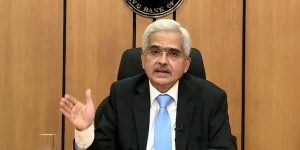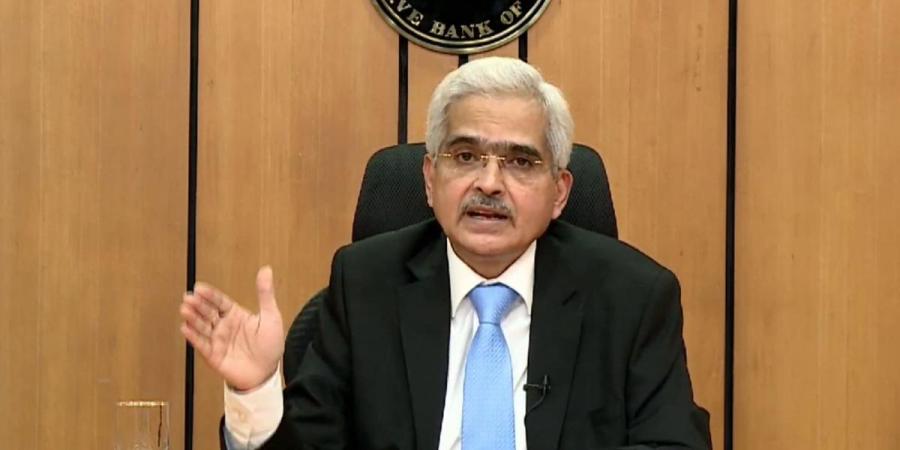
The six-member Monetary Policy Committee of the Reserve Bank of India (RBI), headed by Governor Shaktikanta Das, has decided to maintain the status quo on policy rate amid sticky rate of inflation. At this point, the repo rate or the rate at which RBI lends to banks stands unchanged at 4 per cent. The reverse repo rate also stayed unchanged at 3.35 per cent. The MPC committee members voted unanimously in favour of the decision.
The key decisions taken in the Monetary Policy Committee meeting are:
- The repo rate under the liquidity adjustment facility (LAF) has been kept unchanged at 4.00%.
- The reverse repo rate under the LAF has been kept unchanged at 3.35%.
- The marginal standing facility (MSF) rate and the Bank Rate have been kept unchanged at 4.25%.
RBI Monetary Policy Highlights & Key Decisions:
- Governor Shaktikanta Das proposes to put in place criteria for NBFC dividend distribution, introduces risk-based audit in large NBFCs & co-op banks.
- RTGS will soon be made 24X7 in the next few days.
- The business sentiment of manufacturing firms is gradually improving.
- CPI inflation is seen at 6.8% for Q3 and 5.8% for Q4.
- Real GDP growth for FY21 is projected at -7.5%. Q3 FY-21 GDP is seen at +0.1% while Q4 FY-21 GDP is seen at +0.7%.
- Corporate bond spreads have narrowed to pre-covid levels.
- RBI proposes to enhance limits for contactless card payments from ₹2000 to ₹5000 from Jan 2021.
- On-tap Targeted Long Term Repo Operations (TLTRO) will be expanded to cover other stressed sectors in tandem with Emergency Credit Line Guarantee Scheme (ECLGS) scheme.
WARRIOR 4.0 | Banking Awareness Batch for SBI, RRB, RBI and IBPS Exams | Bilingual | Live Class
About Monetary policy:
What is Monetary policy?
Monetary Policy is the central bank’s policy which uses the monetary instruments like Repo rate, Reverse repo rate, Liquidity Adjustment Facility and many others, to achieve the goals stated in the Act. In India, the Reserve Bank of India (RBI) has been given the responsibility of conducting monetary policy as mandated under the Reserve Bank of India Act, 1934.
Objectives of monetary policy?
- The monetary policy has the prime objective of maintaining the price stability in India along with the objective of growth. Price stability is stated as a necessary precondition to achieve sustainable growth.
- The Reserve Bank of India is also given the task of flexible inflation targeting framework along with the Government of India as per the amendment in the Reserve Bank of India (RBI) Act, 1934 which was done in May 2016. This is done once every five years. Government of India has notified the 4 per cent Consumer Price Index (CPI) inflation as the target for the period from August 5, 2016, to March 31, 2021, in the Official Gazette. The target is started with the upper tolerance limit of 6 per cent and the lower tolerance limit of 2 per cent.
The Monetary Policy Framework:
The amendment in the Reserve Bank of India (RBI) Act, 1934 provides the Reserve Bank of India a legislative mandate to operate the monetary policy framework of the country. This framework aims to set the policy (repo) rate after the assessment of the current and evolving macroeconomic situation, and modulation of liquidity conditions to anchor money market rates at or around the repo rate.
What is the Composition of the Monetary Policy Committee?
The Central Government has constituted the six-member monetary policy committee (MPC) in September 2016, according to Section 45ZB of the amended RBI Act, 1934.
The composition of the Monetary Policy Committee is as follows:
- Governor of the Reserve Bank of India – Chairperson, ex officio: Shri Shaktikanta Das.
- Deputy Governor of the Reserve Bank of India, in charge of Monetary Policy– Member, ex officio: Dr Michael Debabrata Patra.
- One officer of the Reserve Bank of India to be nominated by the Central Board – Member, ex officio: Dr Mridul K. Saggar.
- A professor at the Mumbai-based Indira Gandhi Institute of Developmental Research: Prof. Ashima Goyal.
- A professor of finance at the Indian Institute of Management in Ahmedabad: Prof. Jayanth R Varma.
- An agricultural economist and a senior adviser with the National Council of Applied Economic Research in New Delhi: Dr Shashanka Bhide.
Some important instruments of Monetary Policy:
The RBI’s Monetary Policy has several direct and indirect instruments which are used for implementing the monetary policy. Some important instruments of Monetary Policy are as follows:
Repo Rate: It is the (fixed) interest rate at which banks can borrow overnight liquidity from the Reserve Bank of India against the collateral of government and other approved securities under the liquidity adjustment facility (LAF).
Reverse Repo Rate: It is the (fixed) interest rate at which the Reserve Bank of India can absorb liquidity from banks on an overnight basis, against the collateral of eligible government securities under the LAF.
Liquidity Adjustment Facility (LAF): The LAF has overnight as well as term repo auctions under it. The term repo helps in the development of the inter-bank term money market. This market sets the benchmarks for pricing of loans and deposits. This helps in improving the transmission of monetary policy. As per the evolving market conditions, the Reserve Bank of India also conducts variable interest rate reverse repo auctions.
Marginal Standing Facility (MSF): MSF is a provision which enables the scheduled commercial banks to borrow an additional amount of overnight money from the Reserve Bank of India. Bank can do this by dipping into their Statutory Liquidity Ratio (SLR) portfolio up to a limit at a penal rate of interest. This helps the banks to sustain the unanticipated liquidity shocks faced by them.
Important takeaways for all competitive exams:
- RBI 25th Governor: Shaktikant Das; Headquarters: Mumbai; Founded: 1 April 1935, Kolkata.




 Which City is known as the City of Bambo...
Which City is known as the City of Bambo...
 Who was the First Prime Minister of Indi...
Who was the First Prime Minister of Indi...







